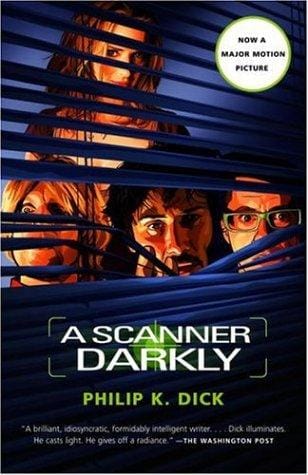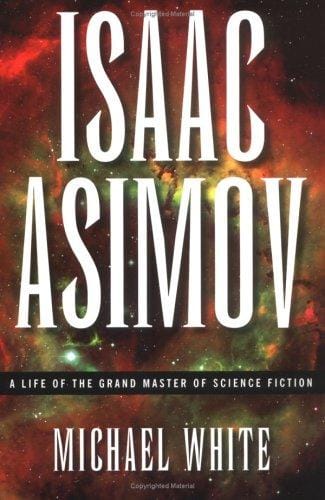Peering Through the Haze: Understanding Philip K. Dick’s “A Scanner Darkly”
An 800-word exploration of Philip K. Dick’s ‘A Scanner Darkly,’ examining its plot, themes, and lasting cultural impact.

Introduction to A Scanner Darkly
Philip K. Dick’s novel A Scanner Darkly, first published in 1977, remains one of the most haunting pieces of science-fiction literature ever written. Set in a near-future California ravaged by drug addiction, government surveillance, and fractured identities, the book offers an unflinching look at the cost of losing oneself. For readers searching for a story that fuses noir sensibilities with speculative technology, A Scanner Darkly stands out as a can’t-miss title.
Plot Overview: A Body-Hopping Mystery
The novel follows Bob Arctor, an undercover narcotics agent who has embedded himself so deeply within a group of Substance D users that he no longer knows which side he’s on. Substance D—also called “Slow Death”—is a highly addictive drug that splits the user’s brain into warring hemispheres. To protect his identity, Arctor works in a “scramble suit,” a shapeshifting cloak that disguises his face and voice even from fellow officers. Ironically, this technological marvel poisons him with anonymity just as Substance D poisons his body, leading to a tragic spiral into paranoia and cognitive disintegration.
Themes: Surveillance, Identity, and Addiction
The Menace of Constant Surveillance
In A Scanner Darkly, technology blurs traditional notions of privacy and autonomy. Dick envisions a world where scanners monitor homes twenty-four hours a day, compiling footage in the name of public safety. The oppressive sense of being watched erodes trust, making every relationship transactional. Today, with smartphones, facial recognition, and data mining, the novel’s depiction of omnipresent surveillance feels chillingly prophetic.
Fragmented Identity and Duality
Bob Arctor’s scrambled existence illustrates the psychological toll of living a double life. The scramble suit allows him to appear as “Fred,” an anonymous agent reporting on his own alter ego without either personality fully aligning. As Substance D corrodes his brain, Arctor cannot separate his undercover persona from his authentic self. Dick uses this internal conflict to question what truly defines personal identity.
Substance Abuse and Societal Collapse
Unlike more fantastical depictions of drug culture, Dick’s portrayal of Substance D is stark, clinical, and grounded in the author’s real-life experiences with addiction. The novel shows how systemic forces—economic despair, governmental neglect, and medical exploitation—funnel citizens toward destructive coping mechanisms. It’s a scathing commentary on the War on Drugs, portraying a vicious cycle where the state enforces laws that exacerbate the very problem it purports to solve.
Characters: Broken Mirrors of the Self
While Bob Arctor is the narrative’s focal point, his housemates contribute to the novel’s uneasy humor and tragic core. Barris, a manipulative tinkerer, epitomizes the dangers of unchecked paranoia. Luckman provides comic relief yet embodies the looming threat of overdose. Donna, Arctor’s love interest and supplier, adds emotional complexity, simultaneously caring for and exploiting him. Their volatile interactions highlight the fragility of found families forged under shared dependency.
Style and Tone: Darkly Comic and Deeply Human
Philip K. Dick’s prose in A Scanner Darkly blends grim aphorisms with moments of slapstick absurdity, reflecting the chaotic mindset of its characters. The dialogue crackles with both wit and dread, mirroring the unpredictable highs and crushing lows of addiction. Dick’s unique voice keeps the reader toggling between empathy and unease, making the narrative’s tragic conclusion all the more powerful.
Film Adaptation: From Page to Rotoscoped Screen
Richard Linklater’s 2006 film adaptation of A Scanner Darkly employed groundbreaking rotoscope animation to echo the novel’s hallucinatory feel. Starring Keanu Reeves, Winona Ryder, Robert Downey Jr., and Woody Harrelson, the movie retains much of the source material’s dialogue and bleak humor. Though certain subplots are streamlined, Linklater’s visual style pays homage to the scramble suit’s ever-shifting façade, further underscoring the themes of blurred identity.
Cultural Impact and Legacy
Decades after its release, A Scanner Darkly still resonates in popular culture and academic circles alike. It’s frequently cited in discussions about privacy rights, substance abuse policy, and the psychological effects of undercover policing. Tech journalists reference Dick’s imagined scanners as cautionary examples when debating surveillance capitalism. Meanwhile, mental-health professionals use the book to spark conversations about dissociative identity and neurochemical damage.
Why You Should Read A Scanner Darkly Today
For newcomers to Philip K. Dick, A Scanner Darkly offers an accessible yet profound entry point into the author’s oeuvre. Its exploration of societal control, personal agency, and drug-induced psychosis has only grown more relevant in the digital age. Whether you are a science-fiction fan, a policy analyst, or a lover of psychological drama, this novel provides both an engrossing story and a sobering glimpse at where unchecked technological and social trends might lead.
Conclusion: A Mirror We Cannot Look Away From
A Scanner Darkly ultimately serves as both cautionary tale and elegy—a memorial to those lost to addiction and a stark reminder of how easily freedom can erode under surveillance. Philip K. Dick’s empathetic yet unflinching narrative compels readers to scrutinize their own realities: the technologies they trust, the substances they consume, and the identities they curate. In doing so, the novel remains not just relevant but essential reading for anyone hoping to understand the darkly illuminated corridors of the modern world.



